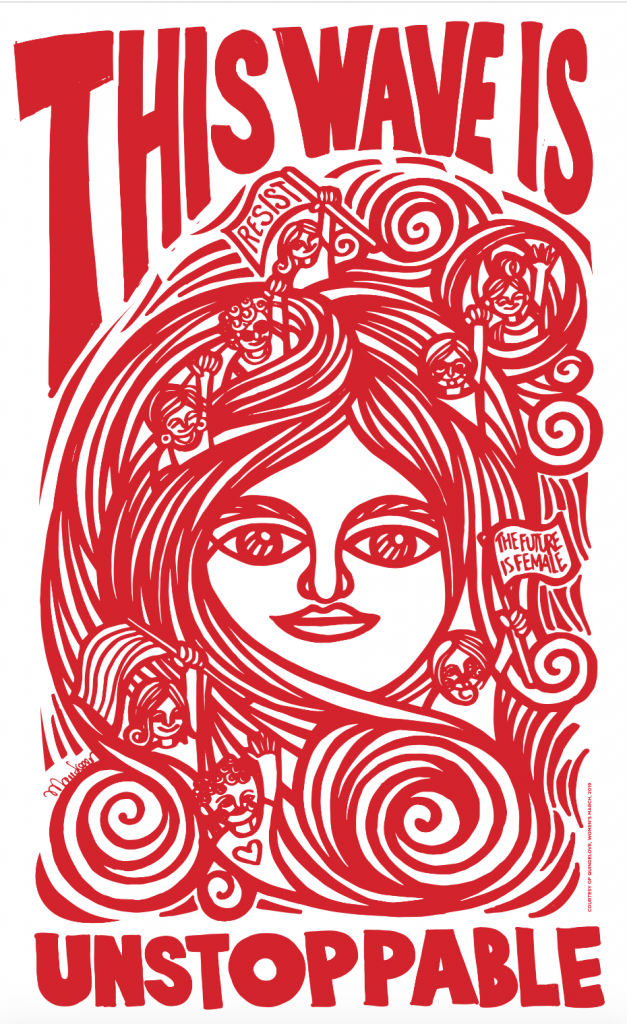Design Idea File 2: Choose an image you find attractive, well-executed, or related to your academic and professional interests, and analyze it according to the Kostelnik readings: choose a segment of the reading and form it into a question for the purpose of analysis as I did with DD Ch. 1 above.
Question: How does the image work within Gestalt principles? How does the image utilize, or not, figure-ground contrast, noise, and other elements of Gestalt to effectively meet the needs of the user?
The Image:

This image effectively utilizes figure-ground contrast by playing with the negative space between the locks of the central figure’s hair. From a distance, the hair seems to be just wild untamed wavy hair, but upon further inspection the viewer recognizes that there are, in fact, figures within those luscious locks.
The figures in the negative space of the hair allow for senses of community, and overarching movement to be built. These senses, however, do not overwhelm the central figure, in whose hair we see all the other people. The sense of unity does not compromise individuality within this image, and there is a sense that they both work in unison to create the political “wave” which according to the text, which frames the figures, is unstoppable.
The text within the image is fascinating as it is not the focus, yet it does help to support the message of the author. It both frames the figures and acts as a guide to the pathos stirred up by the graphic of the face and hair. The image creates those feelings of continuity and community, and the text moves it forward: it specifies where this community is going, how this community leans, and what they’re there for.
The pun of using wavy hair as a stand-in symbol for a political wave is really brilliant as well, and very heavily reinforced by utilizing figure-ground contrast, as well as noise. The noise of the waves doesn’t disrupt the central message, and in a way almost reinforces the positive message that from “chaos” like the wavy hair, good things–like community and progress–can arise.
Furthermore, I think that the usage of the pun is powerful and further builds the authors message–that women are the arbiters of their fate through political advocacy and activism.
Gestalt principles help to further the pathos response the author, and users, wish to elicit from those who see the image. It works to either convert opposition or further edify those who share in their perspective.